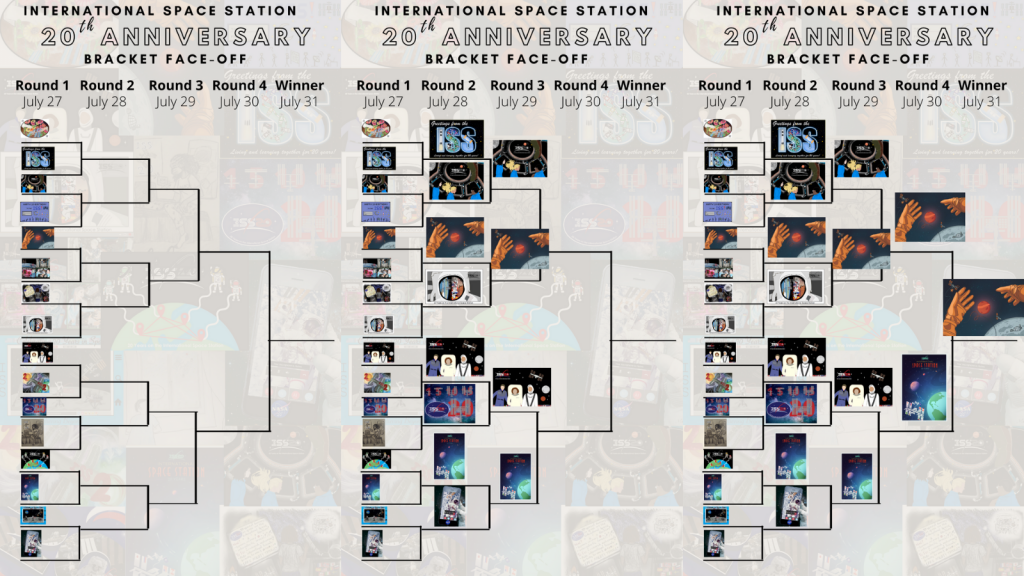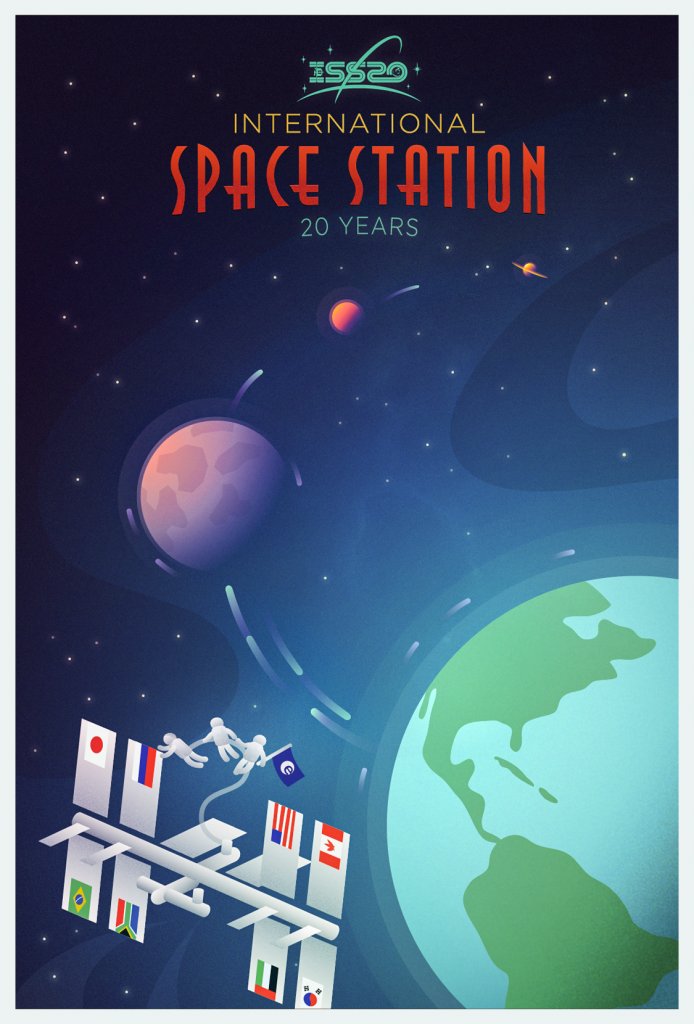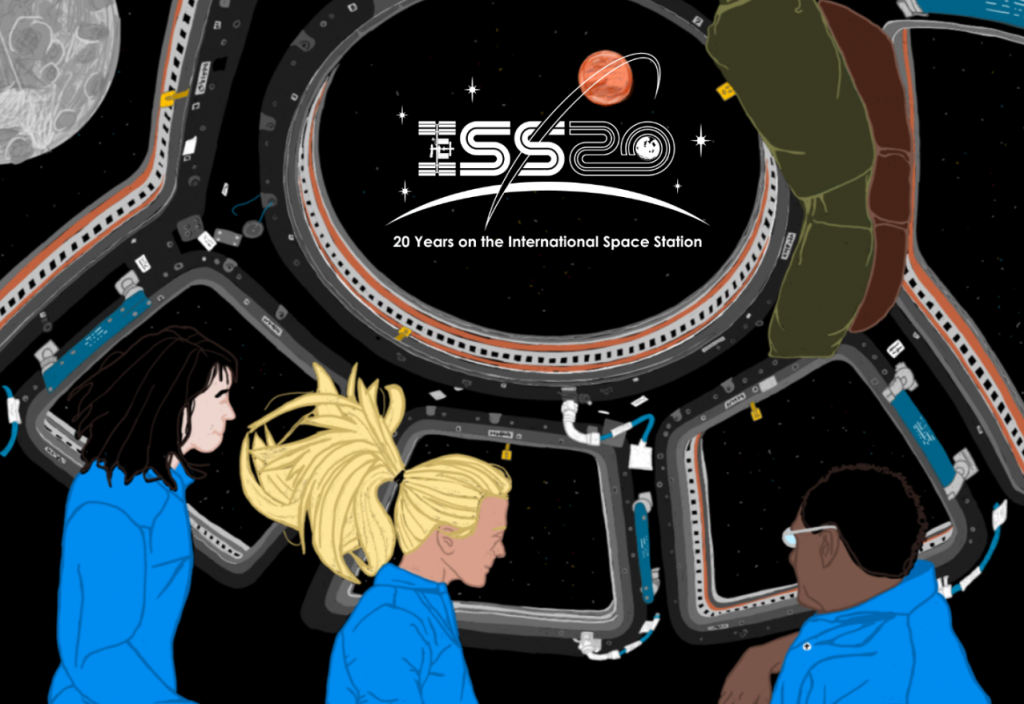2020 has been an interesting time to be an intern. With NASA centers across the nation adapting to the COVID-19 pandemic, the agency’s interns were challenged to complete their rigorous intern tasks from home as telework interns.
With a focus on connecting these high achieving students to the NASA mission, NASA Internships partnered with the International Space Station Program to create a summer intern challenge to celebrate the 20th anniversary of human habitation aboard ISS.
NASA interns from each center were challenged to design a postcard to celebrate the anniversary. The submissions were then vetted by the Internship and ISS offices and the top 16 submissions faced off head-to-head in an Instagram bracket challenge reminiscent of the NCAA Sweet 16. Voting occurred from July 27-30, 2020 on the NASA Internships’ Instagram account.
When voting was complete, the top three designs were selected to be used in STEM on Station events across the nation for students grade K-12. Congratulations to the winners and see all of the amazing designs below. Happy 20 continuous years of life on the space station, ISS!

First Place Winner
Center: NASA’s Armstrong Flight Research Center
Title: “Still Reaching”

Participating AFRC Interns: Bradley Arias, Sara Caudill, Eathan Devine, Ciera Knabe, Sarkis Mikaelian, Howard Peng, and Nathan Sam.
Description: The title of this piece, “Still Reaching,” is a simple phrase that the Armstrong Flight Research Center (AFRC) team decided represents both the 20 years that the International Space Station (ISS) has been in orbit conducting scientific research and future aspirations in space exploration. To best represent the essence of humans in space, a first-person perspective was optimal. This postcard shows that it is not just the astronauts that have been in space, but the ideas and innovations of those back on Earth as well. With a first-person perspective, people looking at the postcard can visualize what it would be like to be in space themselves. To represent unity, the AFRC team decided that depicting multiple astronauts tethered to the ISS was the best approach, because it shows how the very concept of humans in space is supported by something that the whole world has come together to develop. In addition, since it is 20th anniversary of the ISS, the team incorporated the number 20 into the center of the image by using the tether as the “2” – representing the important role the ISS will play in achieving Mars exploration – and by using Mars as the “0” – a nod to the Artemis Generation which is the current goal for space research and expansion. Since the theme of the postcard was reaching towards the exploration of Mars, the astronaut is quite literally reaching out towards Mars. The AFRC team showcased the Lunar Gateway, a future spacecraft that will be permanently in lunar orbit to support future missions to the moon.
Second Place Winner
Center: NASA’s Jet Propulsion Laboratory
Title: “Highway to Heaven”

Participating JPL Intern: Adele Payman.
Description: A vision of the future. Three astronauts are taking a spacewalk. They pause to admire the view: space taxis shuttle passengers to and from the lunar gateway; a Mars resupply mission has launched from the Moon; Cassini’s successor is well on its way to Saturn. It’s another busy day in the era of celestial transit, on a ‘highway to heaven’ which the ISS helped pave. With this postcard, I wanted to showcase the ISS’s role over the past 20 years in facilitating the development of technologies and infrastructure for exploring the Moon, Mars, and beyond. I also wanted to recognize the countries involved in the ISS project (USA, Russia, Japan, Canada, and ESA member states), as well as some other nations which have sent astronauts to the station.
Third Place Winner
Center: NASA’s Jet Propulsion Laboratory
Title: “Through the Looking Glass”

Participating JPL Intern: Victoria Colthurst.
Description: The astronauts are looking through the ISS window where the find the Moon to the left, representing where we’ve been and Mars out ahead, representing where we are going.




















